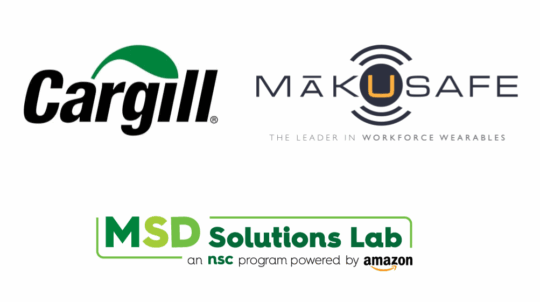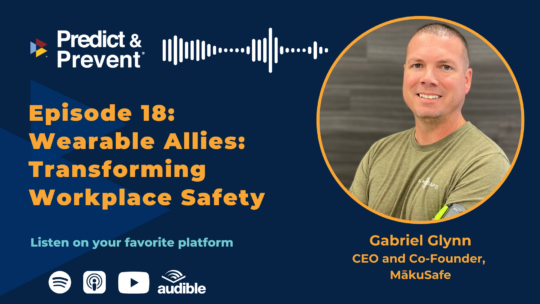NCCI Series: “The Future of Workplace Safety Technology Is Now,” Part Three
May 7, 2024

In this third installment of their series on safety technology, NCCI features a MākuSafe client, Life Line Emergency Vehicles, and their experience with our wearables. LifeLine talks about the impact they are having using MākuSafe, and how they are measuring results. Read more below and follow the link for the full story…
There’s a growing buzz in workers compensation that technology, the workplace, and the role of the worker are changing more dramatically today and at a faster pace than ever before. Along with shifting jobs and evolving workplaces come new and changing exposures to worker injuries. Questions continue to arise about the status and evolution of safety technologies.
In the first installment of our series “The Future of Workplace Safety Technology Is Now,” we shared insights from our interviews with four workers compensation carriers in various stages of testing, introducing, and implementing safety technology. In our second installment, NCCI interviewed six technology innovators who are actively working with workers compensation stakeholders to create and provide various types of workplace safety technologies, including:
- Wearables
- AI/Computer Vision
- Internet of Things (IoT)
- Software Applications
For this third installment, NCCI interviewed three employers that have adopted innovative safety technology including wearables and video AI/Computer Vision.
Excerpted Highlights…
What were the obstacles to implementation and how did you overcome them?
The employers interviewed discussed some of the obstacles to implementing safety technologies, including learning how to manage and act on the data collected and address employee privacy concerns. Interestingly, the cost of the safety technology was not necessarily the biggest obstacle noted by these employers.
- How to use the data collected
One employer that was implementing wearable devices voiced initial concerns about managing the volume of data received from them. The company has approximately 180 employees and decided to conduct a pilot project with 40 wearables for one year.
Another concern the employer had was not knowing how to interpret or use the data collected. After initial training, the employer indicated that to make the pilot program effective they would meet regularly with the technology provider and with their workers compensation insurer to review the data.
This practice was critical to initial success as well as subsequent growth of their program. This employer was extremely satisfied with the initial outcomes, so they expanded the program and are now utilizing 160 wearables. They shared that even the company’s executives are wearing safety devices.
- Employee concerns
Having an ongoing relationship with the technology provider also helped the employers address employee concerns. Each employer noted that their employees were skeptical at first. Employees were concerned about how the data from wearable devices would be used and whether they would “get in trouble.” However, education and transparency alleviated many of these concerns.
An open, honest employer culture is important. According to one employer, employees “buy-in” when there is transparency, management explains the “why,” and wears the device themselves. While not every employee may want to wear the device, the employers believe it was now viewed like any other personal protective equipment such as a hard hat or safety glasses.
How do you use safety technology to monitor change and what results have you seen?
A clear message from the employers interviewed was that the technology had a positive impact on safety in the workplace. They shared that they are constantly monitoring the data and feedback from the safety technologies leading to process change in certain situations.
One employer utilizing wearables in a manufacturing business said they view the data every day. They also meet monthly with experts from the technology provider and the workers compensation insurer reviews the data quarterly. The company’s supervisors were said to review their direct reports’ data on a regular basis.
The data from the wearable devices show ergonomic issues, such as the need for a lift table or tool; and body motion (push/pull injuries) so the employer can change the work process or the employee can change their process or alleviate stress on their body in other ways.
This employer shared positive results, including over 335 “good catches” (a more positive term than “near misses”) with 82% mitigated. The employer noted that their workers compensation costs were reduced by 60% from 2021–2023.
Have these safety technologies had other impacts on your business?
In addition to the results noted above, the three employers interviewed believe the use of safety technologies had other positive impacts on their businesses.
One employer noted there are fewer hours of lost time, fewer trip hazards, and cleaner, more efficient work areas. In general, it is a better place to work with enhanced employee morale.





